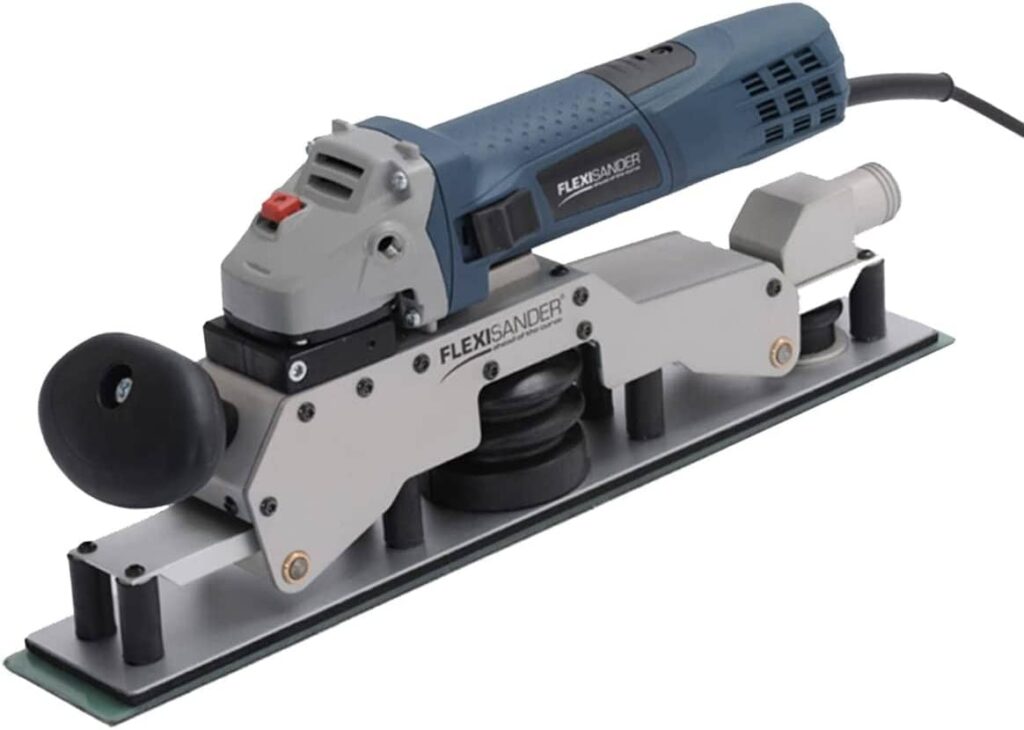Sanding curved surfaces can become a back-breaking task for you, especially if you aren’t familiar with the right techniques. Even I’ve seen many people choose the wrong sanding device and eventually end up disappointed.
So, stick with me right here to find out everything about how to sand curved surfaces and so forth!
What Is The Best Way to Sand Curved Surfaces?
For the best way to sand curved surfaces and stuff like that, the following steps shouldn’t be overlooked at all –
- Trim the bracket with the help of a bandsaw, saber saw, or jigsaw.
- In clamps or woodworking vise, ensure to gather two brackets.
- Let’s convert your drum sander into a drill, and the cordless one is preferable.
- Through the sander, smoothen the surface in the right direction.
You need to select a good sander for curved wood (like cabinets) to finish the project perfectly.
What Type of Sander to Use for Curved Surface?
Here comes a confusing fact – What should we use in terms of sanding curved surfaces? Well, according to my study, there is not a single best tool you may use to get the work done!
What does it mean? It means professional carpenters always prefer multiple sanding tools as sanding curved surfaces is a bit tricky. As I’ve mentioned earlier, a drum sander is always a good choice for smoothening the surfaces, especially for concave surface wood.
Besides, for sanding the convex surface of wood, using an angle grinder, hand sander, and random orbital sander is a wise idea.
Lastly, if you find the surface irregular, go for a flap sander.
How to Sand a Curved Surface (Step by Step Guide)
After collecting a hand sander, you’re allowed to start sanding curved surfaces following the step-by-step guidelines:
Step-1: Preparing the Sponge & Sandpaper
The first task should be collecting a piece of dish sponge (soft). Cut it up considering the size of that curved surface, especially if the curve appears small. A single piece of foam rubber may just be fine to complete the task.
Whereas, for tiny curves, adjust sandpaper through your own fingers to secure it via a band (rubber).
Step-2: Utilizing Extra Strokes by Sanding
Once you place the sponge around the sandpaper, make sure to hold it as firmly as needed through your hands. Afterward, carefully start sanding the curved surface in the grain’s direction.
While doing this, use light strokes instead of high. This might be a little tough at times to press in a curved area down. In this case, feel free to use extra strokes.
Step-3: Observing the Smoothness
Now, sand the curved surfaces’ edges following the same direction. But here, you may need to enhance the grit. By observing the rough patches and running your hands towards the surface, be sure to check the smoothness.
If you still find any roughness, keep on sanding.
Step-4: Getting Ultimate Finish
Using a rotary tool, sand the curve in a downward position. Don’t try to apply heavy pressure while pushing the tool’s tip against the curved surface’s edge. Let’s make several passes at once till you get the ultimate finishing.
For sanding down from rougher to smoother surfaces, feel free to utilize gradually finer accessories.
How to Sand Convex Surface
Sanding convex surfaces can turn into a breeze if you get the right tools and proper knowledge. Here, I’d like to use polystyrene and a random orbital sander for sanding the particular surface. Follow the steps thoroughly:
Step-1:
Make an attachment between the random orbital sander and a piece of sanding paper. For this, use polystyrene that you’ve collected and add it to the center part.
Step-2:
For a better attachment, apply adhesive on each polystyrene side through spraying.
Step-3:
Finally, take assistance from your random orbital sander, and continue sanding by applying slight pressure. Afterward, you’ll notice the foam is getting firmly adjusted to the curved surfaces.
That’s how you can sand convex or irregular surfaces.
Do Orbital Sander Good for Curved Surfaces?
Not only good, but orbital sanders can also be your ultimate go-to choice for sanding curved surfaces, especially convex ones.
In fact, many expert carpenters tend to spend only on a single sander, which is an orbital sander, as it is easy to use, maintenance-free, and reaches tight areas to sand curved surfaces.
So, if you also find it a better choice for you, then stick here as I’m going to share my top-favorite choice on an orbital sander.
Best Sander for Curved Surface
Let me describe the striking features of my selected best orbital sander for curved surfaces, including the good sides, bad sides, and the way to use it.
Flexisander FS40070E

Let it be car-body repairing, shipbuilding, or even sanding curved wood, the Flexi sander FS40070E Orbital Sander can do it all! The manufacturer has made it so that it can sand both flat and curved surfaces, making it a multi-functional product to meet your needs.
Measuring around 19.7 x 5.1 x 7.5 inches, Flexi sander weighs only about 6.80lbs to ensure portability. Thus, you can transfer it anywhere while needed, from home to the garage.
Thanks to the variable speed option it comes with—the Flexi sander features around 3000 to 8000 RPM. So, depending on the surface you want to sand, you can turn the speed up and down to create an optimal curve.
And yes, you won’t have to deal with any mess around the workspace due to its effective “dust extraction system.”
Durability is another great factor of this orbital sander as it combines a composite plate of sanding and an all-aluminum frame. And thankfully, its fastening system gets a Velcro-type option for quick and hassle-free replacement of abrasives.
So, overall, it won’t be a bad decision at all to spend on such a sander that has everything you’re searching for.
Good Sides
- Lightweight design for portability
- Durable aluminum frame
- Effective extraction system
- Hassle-free fastening system
- Ideal for both flat and curved surfaces
Bad Sides
- Pricey in this category
- Always in need of a cord to run as it is electric-powered
How to Use It?
- First off, look for the nearest socket
- Get your hands on the plug to connect it
- Before you begin, add an appropriate sanding disc
- Keep the surface ready to sand, and then start sanding by switching it “on”
Last Words
After getting plentiful ideas, I can hope that sanding curved surfaces isn’t a nightmare for you anymore! Make sure to follow all the rules and steps I’ve mentioned here.
And for curved surfaces, you can surely try my handpicked orbital sander to get the best results.

I am Imtiaj Islam. I am a wood working enthusiast, having 6 years of experience in carpentry work. I have a BBA graduate degree from Chittagong College. I got vocational training on wood works from Korean Polytechnic out of the quest and zest he has for carpentry as well. I take several wood projects and keep testing different woodworking tools for comfortable and perfect work. I just love playing with woods and machines.
